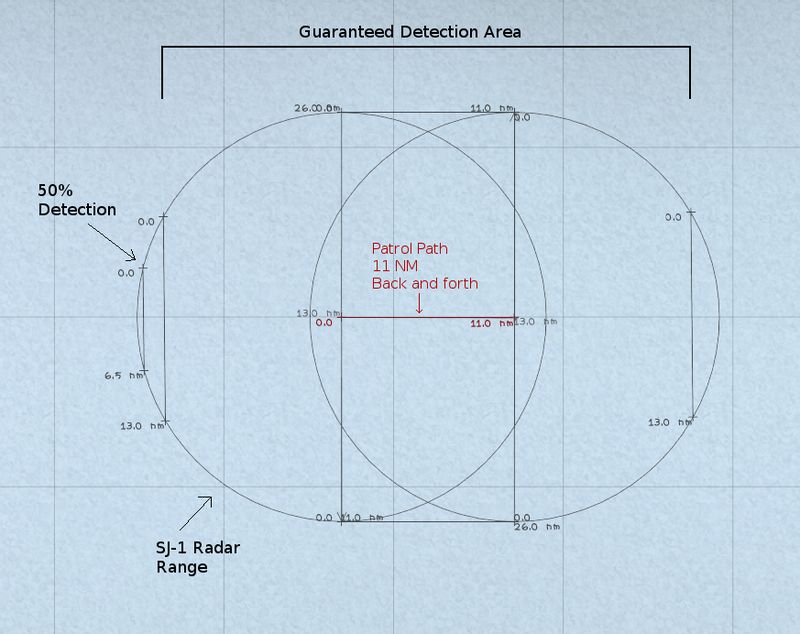So here's my take on this, and I would encourage further thought or debate on its merits.
So suppose, for example sake, that you are patrolling a suspected shipping lane that runs north-south.
Consider, that nearly every merchant target moves at a speed of 11 knots or less (usually slower).
Let's further assume that your sensors have a reliable detection range of 13 miles (this is my experience for SJ-1 radar in TMO).
Let's also assume that you want to patrol at a cruising speed of 10 knots.
So, to ensure that no target heading north or south gets past you, the best course of action is to patrol strictly perpendicular to the shipping lane.
If your sensor has a detection radius of 13 miles, it will take a 11 knot target 141 minutes to pass through it completely, meaning that you must be back at your original position within 140 minutes or so.
During your patrol, you must turn 180 degrees twice, taking a total of 7 minutes, leaving a total cruising time of 133 minutes. (may vary by boat, mods, etc. accurate for a balao doing 10 knots in tmo though)
Each leg of the cruise then becomes a 66 minute cruise at 10 knots, for about 11 nautical miles each way.
In this case, it is certain that no target moving at a speed no greater than 11 knots can pass through a 11X26 mile box (286 square nautical miles). Additionally, on the west and east ends of the box, there is a 13 mile radius semicircle of detection. A 11 knot target may not pass through most of either of these areas without detection either. The sole part of the patrol area that a target may pass through undetected would be a segment of the circle defined by a 13 mile cord running north-south at the far end of the circle, an area of 88 miles. This works out to guaranteed detection of any 11 knot targets passing through an area of 641 square nautical miles (with an additional less than 100% chance of detection over 176 square miles as below) vs 531 if you had remained stationary or a 17% increase.
Inside of this small segment, the odds of detection depend on target speed, and are directly proportional to the resulting length of chord. For example, the odds of detecting an 11 knot target passing through a north-south chord of 6.5 miles would be 50%.
I thought it might be helpful to include a diagram of what I'm talking about.

With other sensors, the amount of time you can spend moving east-west will be reduced proportionally. For example, suppose that your detection radius is half of the SJ-1 range, or 6.5 miles. This would reduce the cruising time of each patrol leg by half.
If you are willing to accept a less than 100% chance of detecting a 11 knot target, lets say guaranteeing detection of 9 knot targets instead, the amount of time spent on each leg of the patrol would then be increased proportionally. That would increase the length of each leg to 13.75 miles, with a 100% chance of detecting targets doing 9 knots.